










THERE is no democracy without dissent – this was the crux of an open letter written to PM Narendra Modi by about 50 renowned personalities, including historian Ramachandra Guha, filmmakers Mani Ratnam and Shyam Benegal, and vocalist Shubha Mudgal in late July. They had articulated their genuine concerns over the growing incidents of mob lynching and other hate crimes against minorities, barely two months after the BJP’s thumping win in the Lok Sabha elections. Now, they find themselves in the dock precisely for expressing dissent as an FIR has been registered against them on the order of a court in Muzaffarpur (Bihar). Sudhir Ojha, a local lawyer who projects himself as a patriot-cum-crusader and has a knack for embroiling VVIPs in litigation, has accused them of ‘tarnishing the nation’s image, undermining the PM’s impressive performance and supporting secessionist tendencies.’ These public figures, much respected in their respective fields, have been booked on charges as diverse as sedition, creating public nuisance and hurting religious feelings.
The drastic action underlines how the space for exercising one’s constitutional right of freedom of speech is shrinking in India. Ironically, these celebrities had faced opposition from their own peers soon after the open letter hit the headlines. As many as 61 newsmakers — more loyal than the king — had come out with a counter-statement against ‘selective outrage and false narratives’. Actor Kangana Ranaut, lyricist Prasoon Joshi, dancer Sonal Mansingh and others had dubbed members of the ‘rebel’ group as self-styled guardians and conscience-keepers.
The ever-rising intolerance is a stark reality which the powers that be have been brushing aside for too long. The fact that the National Crime Records Bureau has failed to release its reports for 2017 and 2018 suggests that the government is not keen on making inconvenient truths public. Brazen attempts to muzzle the voices of sanity and reason are symptomatic of a deep malaise. Those who are red-flagging heinous crimes are themselves being branded as law-breakers. Such victimisation poses a grave threat to democracy. Hopefully, the cases lodged at the behest of overzealous petitioners won’t deter right-minded citizens from highlighting the rot.
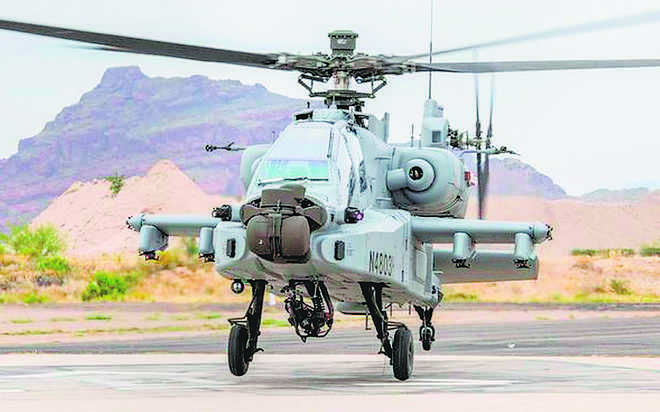
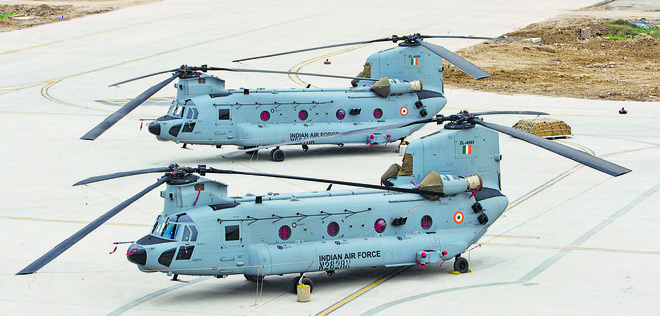
Chinook Inducted in March, the CH-47F Chinook helicopter is made by US aerospace giant Boeing

New Delhi: Nearly 2,000 short-service and emergency commissioned officers, who played crucial operational roles in the India-Pakistan wars 1965 and 1971 but could not be absorbed into the Army, may soon start getting a monthly pension of Rs 30,000.
This was among the many issues discussed at the Army Commanders’ Conference Wednesday.
The proposed pension scheme is on the lines of the Ministry of Home Affairs’ scheme for freedom fighters and their families.
Sources in the Army said the force had moved a proposal to the Ministry of Defence (MoD) in March this year. The ministry examined it and sent it back to the Army with some queries. The Army is currently in the process of filing its replies.
A senior Army officer said on the condition of anonymity that about 2,000 such personnel have been identified.
“They could not be absorbed, despite playing crucial operational roles in both the wars,” the officer said, adding they deserve the monthly pension like other war veterans.
In May this year, the Union cabinet approved the Ex-Servicemen Contributory Health Scheme (ECHS) for such short-service and emergency commissioned officers.
The Department of Ex-servicemen Welfare, under the MoD, had written to the states last year to ensure that World War II veterans get a monthly assistance of Rs 10,000, even though there are very few such surviving veterans.Several states had not increased the amount to Rs 10,000, despite repeated reminders from the ministry.

There are many reasons to rejoice at the opening of the Kartarpur corridor, but we will need to watch out against subversion in particular. Pakistan has ulterior motives to waive visa to encourage the number of visitors. It is India which needs to be on its guard. Politicos underplay security perspective for own reasons.

Lt Gen NPS Hira (Retd)
Former Deputy Chief of Army Staff
There are a number of reports about Pakistan trying to revive militancy in Punjab, besides dropping weapons for use by militants in Kashmir. Given the past diabolic history of the ISI in Punjab, such incidents are no surprise. India is soon to permit 5,000 pilgrims to visit Kartarpur Sahib every day. To avoid any trouble in future, it is important to look at our experience with Pakistan so far.
There were perhaps more players responsible for Punjab militancy within the country than outside. The political parties of the day had their equitable share in the problem. The Punjab police, silent spectators at one stage, later rose to the occasion to get the state out of the dire mess. There is one dimension of the conflict which was not unmasked in its entirety: the role of Pakistan’s ISI.
Intelligence operations being covert in nature, escape attention. The only agencies which get to know about their designs are the security forces or the adversary agencies. A first-hand authentic account of the ISI, which indeed was an eye-opener to the world about its capability, was narrated by Brigadier Mohammad Yousaf of the Pakistan army who was in charge of the ISI’s Afghanistan operations. The revealed magnitude of the operation and the audacity of the ISI shook everyone. Around the same time, the ISI had a parallel operation going on in Punjab, equally notorious.
The major intelligence agencies of Pakistan are the ISI, IB and military intelligence. It was the poor performance of Pakistan’s IB in 1947-48 war against India that led to the raising of the ISI. It was an external intelligence agency with a major focus on India. General Ayub Khan was distrustful of Bengali police officers in East Pakistan IB. Therefore, he decided to assign the task of internal intelligence of East Pakistan to the ISI. As time went by, there was an increase in the mandate of the ISI in the internal matters to include West Pakistan. When India began to have problems in Nagaland and Mizoram, a separate cell was added in the ISI to exploit trouble in the North-East. Thereafter, a separate cell was raised to assist Sikh Home Rule movement which was in its nascent stage at that time. It was General Zia-ul-Haq who assigned the entire internal intelligence of Pakistan to the ISI. His prime motive was to keep surveillance on his main adversary Zulfiqar Ali Bhutto and the Pakistan People’s Party. Since then, there have been occasional efforts by the Pakistan government to cut down the ISI mandate, with little success.
To begin with, the Khalistan movement was majorly an expatriate venture. It was a master stroke of General Zia-ul-Haq, who shifted the centre of gravity of the Khalistan movement to Pakistan. Zia’s problem was the existing antipathy between the Sikhs and the Muslims, arising out of India-Pakistan partition violence. To mitigate that, he got the Sikh shrines in Pakistan restored and encouraged Sikh pilgrimage. He provided logistics and international propaganda to the movement through Pakistani press. The hypothesis was that keeping Punjab destabilised through militancy was equivalent to Pakistan having an extra army division in war against India at no cost, which holds good even today.
Add to that, the internal politics of Punjab at that time had made the state vulnerable. The evidence of the ISI support to the Khalistan movement can be assessed from the fact that after Operation Bluestar in 1984, the Army recovered 560 rifles, 40 light-machine guns, 90 carbines, 150 pistols and two anti-tank rocket launchers from the temple complex. The ammunition recovered was enough to last a sustained battle for days. The recovery of machine guns and anti-tank rocket launchers in such numbers is a clear evidence of the support from across the border. Had it not been for the support, guidance and training imparted by Pakistan, a state-level law and order problem could not have reached a crescendo. The problem had to be dealt with a fierce war-level action. The Indian Army suffered more than 300 casualties and injuries in one night.
The ISI is a bad word not only in India, but across the globe. It is the largest intelligence agency in the world. It is assessed to be around 10,000 officers and staff, in addition to its informers and assets. Its methods include lobbying and influencing opinions about Pakistan through think tanks in important cities the world over. Some studies have assessed it to be among the highest rated intelligence agencies. The BBC rated it at number two in the world, next only to Mossad of Israel. The Guantanamo Bay file leaks show that the US considers the ISI to be a terrorist organisation as dangerous as the Al-Qaeda.
During the Punjab militancy, the ISI modus operandi was to fuel the local issues between Sikhs and Hindus by engineering acts of desecration and propaganda. Unaware of ulterior designs, Punjab militants played into the ISI’s hands. Punjab, at present, is peaceful but some local issues can be fomented. Pakistan has been constantly pursuing the policy of ‘death by thousand cuts’ against India. The ISI is very pathological about its work, always on the lookout to create and exploit dissensions.
Our experience so far with the Line of Control (LoC) and border crossings established between India and Pakistan is that the ISI has been constantly at work to trickle in fake currency, drugs, weapons besides subversion. There are many reasons to rejoice at the opening of the Kartarpur corridor, but we will need to watch out against subversion in particular. Pakistan has ulterior motives to waive visa to encourage the number of visitors. It is India which needs to be on the guard. As I saw it happen when trade was opened between Srinagar and Muzaffarabad in 2008, politicos tend to downplay the security perspective for their own reasons. The trade was opened without even installing full-body truck scanners. The trade route has become an additional avenue for the ISI to smuggle in currency and weapons.
Any mass crossing of the border or LoC, on whatever account, has been seen to serve as a coordination place for the ISI’s sources and militant organisations. Such meeting points obviate the need for using radio or mobile communications, which are susceptible to interception by security forces. Therefore, there must be no complacency and short-cuts in monitoring the visitors and installing the biometric equipment, including face recognition software, at the ICP. Given the past experience and desperation of Pakistan, seen after the revocation of Article 370, it may be naive to think the ISI will let go of any such opportunity. Our intelligence agencies are up against one more challenge.
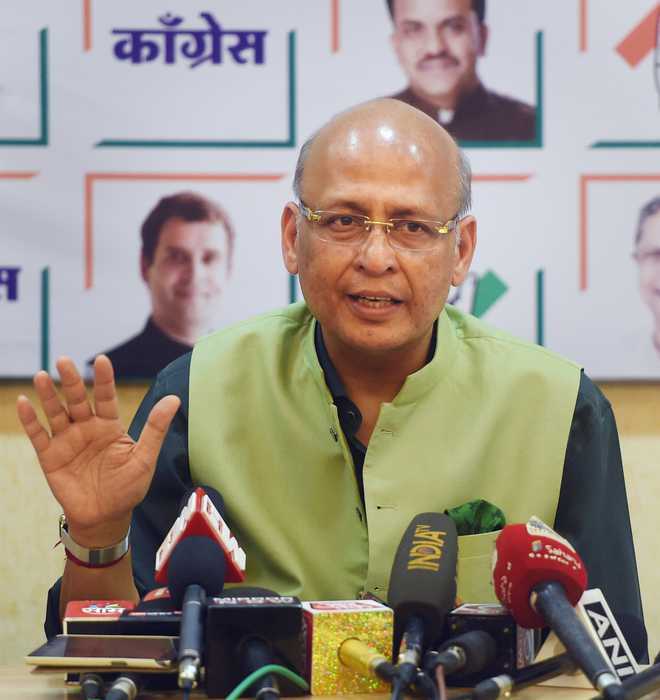
New Delhi, October 20
The Congress on Sunday hailed the Army’s action of destroying terror camps across the LoC, saying it is proud of the armed forces’ valour.
In a major counter-offensive after Pakistan’s unprovoked firing, the Indian Army on Sunday carried out heavy artillery strikes targeting four terror launch pads and several Pakistani military positions in Neelam Valley in PoK, killing 6-10 of their soldiers and as many terrorists, according to Army Chief Bipin Rawat.
“Another spectacular campaign in the direction of destroying terrorist camps across the border by the brave Indian Army. We are proud of your valour and courage,” Congress spokesperson Abhishek Singhvi said in a tweet.
Asked about the exchange of firing at the border, Haryana Congress chief Kumari Selja, at a press conference here, said, “The Indian Army has always kept India’s borders safe. We are proud of our army and we have full confidence on the armed forces that they will protect our borders. Our army is fully capable.”
Six to 10 Pakistan Army personnel were killed and three terror camps destroyed in a retaliatory action by the Army opposite the Tangdhar sector in Jammu and Kashmir, Rawat said. — PTI
Islamabad: The Financial Action Task Force (FATF) has decided, in principle, to keep Pakistan in its Grey List till February 2020, directing Islamabad to take extra measures for complete elimination of terror financing and money laundering, according to media reports on Wednesday.
The FATF is an inter-governmental body established in 1989 to combat money laundering, terrorist financing and other related threats to the integrity of the international financial system.
In a meeting in Paris on Tuesday, the FATF reviewed the measures that Pakistan has already taken to control money laundering and terror financing, reported Dawn News.
The Paris-based task force has urged Pakistan to take extra measures for complete elimination of terror financing, it quoted Aaj TV. The FATF will take a final decision on Pakistan’s position in February 2020.
A formal announcement about the interim developments will be made on Friday, which is the last day of the FATF’s ongoing session, the report said.
However, Pakistan’s Finance Ministry spokesperson Omar Hameed Khan rejected the reports of the country remaining in the Grey List, saying “it is not true and nothing before October 18 (can be confirmed)”. The FATF has decided to give respite of four months to Pakistan to help her implement remaining recommendations of the task force, Aaj TV reported.
Earlier at the FATF meeting in Paris, Pakistan’s Minister for Economic Affairs Hammad Azhar had explained his country’s positive performance in 20 of the 27 parameters to check terror financing.
China, Turkey and Malaysia “appreciated” the steps taken by Pakistan, Dawn News reported. The support of at least three countries is required to not blacklist any country.
At the Tuesday meeting, India recommended the blacklisting of Pakistan citing Islamabad permitting Hafiz Saeed to withdraw funds from his frozen accounts, the report said. The meeting is being attended by representatives from 205 countries, the IMF, the UN, the World Bank and other organisations.
Concerns were also raised on the tax amnesty scheme offered in Pakistan, the report added.
Pakistan was placed on the Grey List by the Paris-based watchdog in June last year and was given a plan of action to complete it by October 2019, or face the risk of being placed on the black list with Iran and North Korea.
If Pakistan continues in the ‘Grey List’, it would be very difficult for the country to get financial aid from the IMF, the World Bank and the European Union, making its financial condition more precarious. Islamabad is obligated to report its performance to the group every three months.
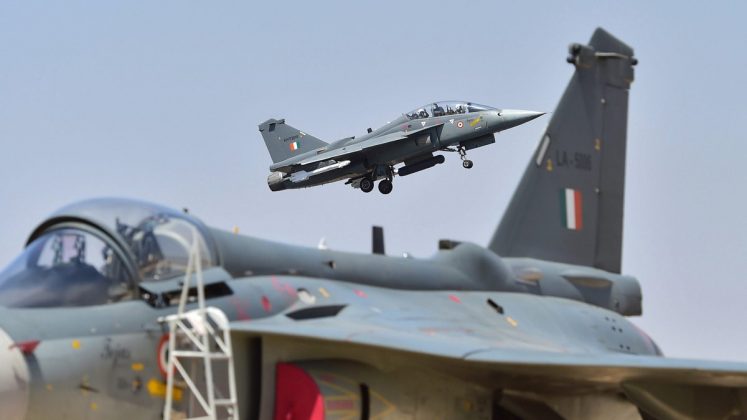
Air Marshal Rakesh Kumar Singh Bhadauria, the new Chief of Air Staff, claimed in a press conference that the days of importing jets were over and that the Indian Air Force will now throw its entire weight behind the fifth generation Advanced Medium Combat Aircraft. This seemingly innocuous statement reveals the deep malaise in our defence thinking, born from a lack of institutional handover of knowledge. To understand what could go wrong with the Advanced Medium Combat Aircraft (AMCA), we need to look at what went wrong with the Light Combat Aircraft (LCA), the homegrown Tejas. After all, the only reason we still fly the “flying coffin” MiG 21s is because of the inordinate delay in the induction of the fourth generation Tejas – the aircraft whose maiden flight took place in 2001 but which is yet to be operationalised 18 years later. This is when the US, Russia, and China have started fielding fifth generation fighters with the US operationalising the F22 back in 2005. Misplaced priorities To start with, both “light” and “indigenous” had become anachronistic even before the Tejas took its first flight. When the aircraft was conceived in an era before fly by wire (fbw) system was introduced, “light” denoted manoeuvrability. Recall how the original Maruti 800 was once considered much easier to drive than the bulky Ambassador, but the entry of electronic steering made even a huge BMW 7 Series just as easy to drive as a minuscule Tata Nano. This obsession with “light” meant that when, within the 4th generation, the emphasis shifted from kinetics to electronics, sometime in the mid-1990s, Tejas had neither the extra power nor the space to accommodate the additional electronics such as data boxes, secure network devices, built-in countermeasures and associated wiring. Moreover, it became painfully obvious that India, still a third world pre-industrial country, did not possess either the industrial depth or width to produce the entire gamut of electronics required to facilitate this change of focus in fourth generation aircraft. Additionally, the need to be “indigenous” was born in an era before the collapse of the USSR, when India was subject to severe technology transfer restrictions, which were rapidly and progressively lifted after US President Bill Clinton’s visit in 1999. In short, by the time the very first Tejas flight came around in 2001, the rationale to be light and indigenous had both evaporated. More significantly, 18 years on, we still haven’t internalised these changes or learnt from our mistakes. Rooting for a ‘deeply flawed’ AMCA While Britain is moving forward with a sixth-generation aircraft, India is pondering rudimentary and deeply flawed designs for a fifth generation Advanced Medium Combat Aircraft, despite being so far behind the technology curve. Why is AMCA flawed? For starters, much like the Tejas, the AMCA seems to focus on paradigms of combat that have long since been bypassed. Defence and foreign policy expert Pushan Das and I had written about this extensively in 2015. A summary of the findings from our analysis are as follows: 1) Too much emphasis on engine thrust and thrust vectoring despite close-range air combat having moved away from G force manoeuvring to get into an attack position to Angle of Attack, which emphasises maintaining power and recovery from a steep manoeuvre. 2) A continuing emphasis on kinetics as opposed to understanding that a fifth generation aircraft is essentially a computer in the air, able to cut short the processing time, and reduce the ‘detect to kill chain’ (the time taken between detecting and killing an aircraft – essentially the ability to detect first and shoot first, and in the case of stealth, hopefully avoid being detected) by several tens of seconds (the difference between life and death). 3) The lack of emphasis on deep networking with other detection and attack assets, which form the basis of the fifth generation combat that allow it to hand over time-critical information to assets that may be better positioned or equipped to fire the first shot. 4) No thought was given to a new range of smaller but long-range weapons to be carried in sufficient numbers concealed within the body of the aircraft. 5) No thought was given to conformal sensors that blended into the aircraft’s body or new materials like cockpit canopies that allow the pilot to look outside but prevent radars from detecting the cockpit (which is a major problem as it is not stealthed up like the rest of the aircraft’s body) or frequency selective radome materials that perform the same function for the radar (allow the radar to function unimpeded, while preventing the radar’s flat surface from being detected by other radars). 6) A range chart that seemed horrendously muddled, implying that the twin-engine AMCA would cover the same range in twice the amount of fuel that an F-35 would with half the fuel. Given these serious conceptualisation flaws that do not bode well from a project and risk management point of view, besides the industrial supply chain problems inherent in the Tejas, we now run a very high risk of chasing another white elephant. It’s one thing that the Defence Research and Development Organisation (DRDO) did not learn anything from its failures — natural given it is a public sector undertaking with no accountability or risk. But the Indian Air Force’s failure to internalise these lessons after so many crashes and deaths and capability shortages is simply appalling.
idrw.org .Read more at India No 1 Defence News Website https://idrw.org/air-chief-bhadaurias-focus-on-homegrown-amca-shows-iaf-learnt-nothing-from-tejas-failure/ .
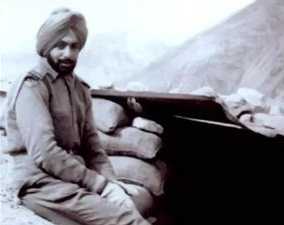
Tribune Web Desk
Chandigarh, October 10
Punjab Chief Minister Captain Amarinder Singh on Thursday got nostalgic remembering his days in the Army. On National Post Day, Captain thanked India Post Office for their services.
In a tweet, Captain gave a “salute” to India Post Office. He revealed how receiving a letter from home, used to be his driving force. Along with a heartfelt note, he shared a picture of himself in his uniform.
In the black and white picture, Captain can be seen sitting near a bunker.
He wrote: “Nothing can beat the feeling of receiving a letter from home in the army! It used to be our driving force during my army days & these letters brought both tears & smiles. I salute @IndiaPostOffice for their service to the nation & thank them for the memories. #NationalPostDay.”
Nothing can beat the feeling of receiving a letter from home in the army! It used to be our driving force during my army days & these letters brought both tears & smiles.
I salute @IndiaPostOffice for their service to the nation & thank them for the memories.#NationalPostDay



























































